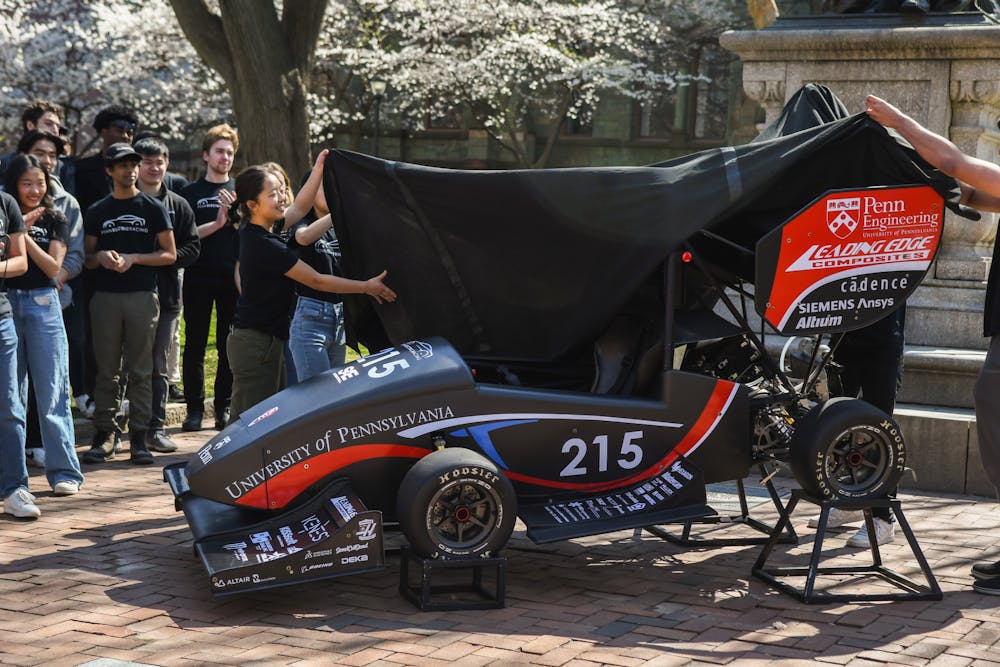Penn Electric Racing revealed its new, full-sized electric racing vehicle at College Green on March 29 ahead of the Formula Society of Automotive Engineers competition in June.
Penn Electric Racing, the University's Formula SAE Electric Team, is composed of around 100 undergraduate students who work throughout the year to build a fully electric car. This year's model, REV9, will compete against nearly 100 teams from various continents at the annual FSAE Electric Category in North America.
This competition marks Penn Electric Racing's tenth year. Over the past decade, the team has built nine cars and won 39 trophies. Last year, Penn Electric Racing placed 16th in the competition.
The team is organized into four subteams: mechanical, hardware, software, and operations. The process for developing this year's car began before the start of the school year and kicked off during the summer following the previous competition. REV9 is currently configured as a rear-wheel drive, housing a single motor in the rear. The main objective for this year's car is to advance towards a four-wheel drive, which entails having four motors powering the vehicle.
“This project has been going on for a pretty long time and is something that we're very excited for,” Engineering sophomore and Penn Electric Racing operations lead Rachel Xie said.
An added feature this year was the development of a custom motor controller. The new motor is lighter, more compact, and integrates with REV9, according to Engineering sophomore and mechanical co-lead Rohan Maliekkal.
“This is perhaps the most ambitious task the team has undertaken in many years,” Maliekkal said.
For the first time in the team's history, Penn Electric Racing developed suspension components such as pull rods and tie rods made out of carbon fiber. Eric Cao, Engineering sophomore and REV9 software co-lead, said that the software team has also been designing systems and code to power the vehicle.
‘We're just not being supported’: Students allege unfair treatment of Penn Engineering clubs
George Pappas elected to National Academy of Engineering for cyber-physical systems research
“We've worked on reducing the metaphorical weight of the car by refactoring some of the codebase written in over 1 million lines of C++ code,” he said.
75 teams are currently registered for the competition in June, which is scheduled to take place in Brooklyn, Michigan.
“There's a lot of anxiety and a lot of stress that comes before this type of event, too,” Xie said. “But we gain valuable hands-on experience, and the hard work and dedication that we put in truly bond us, allowing us to develop lifelong friendships.”









